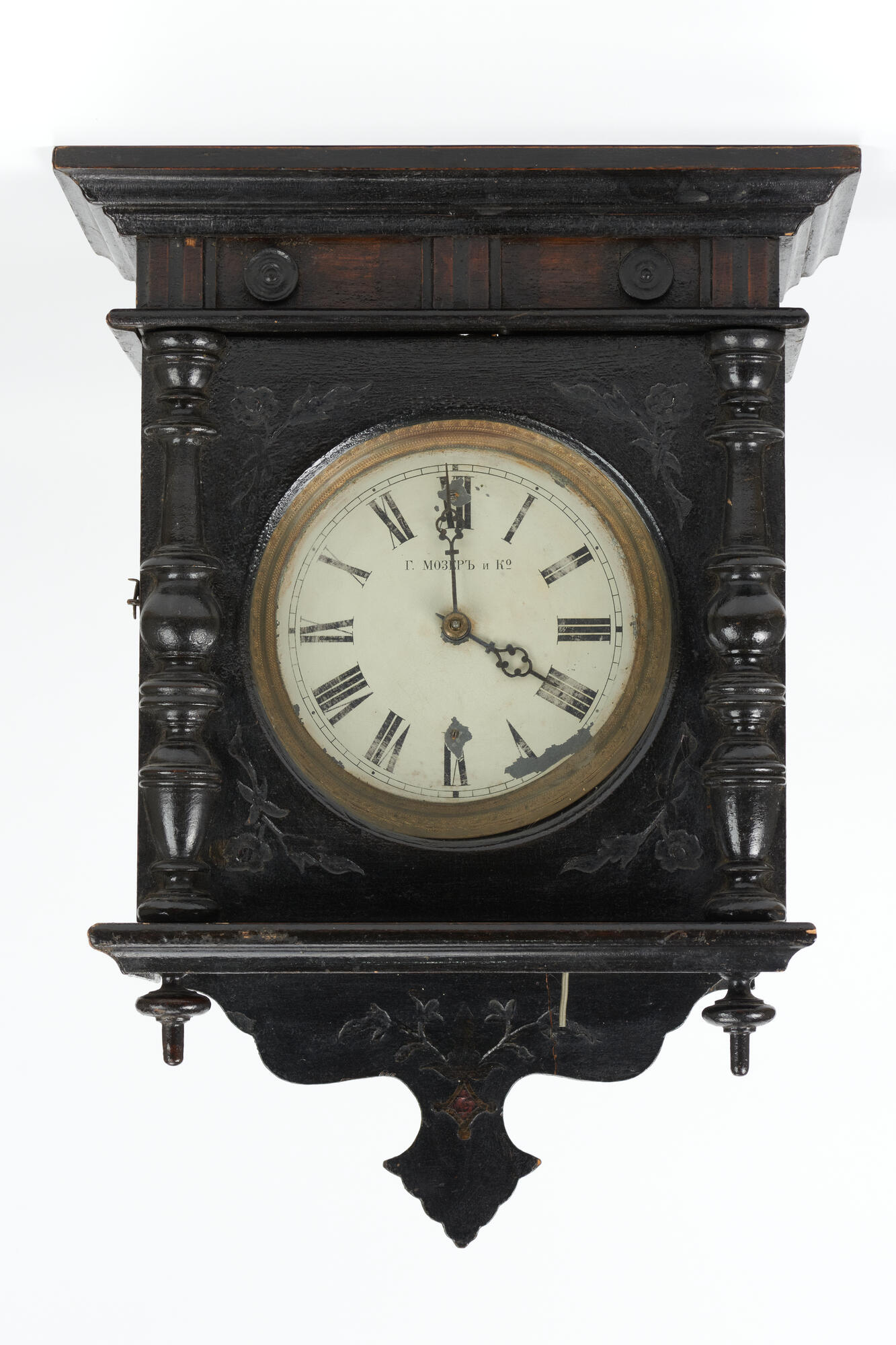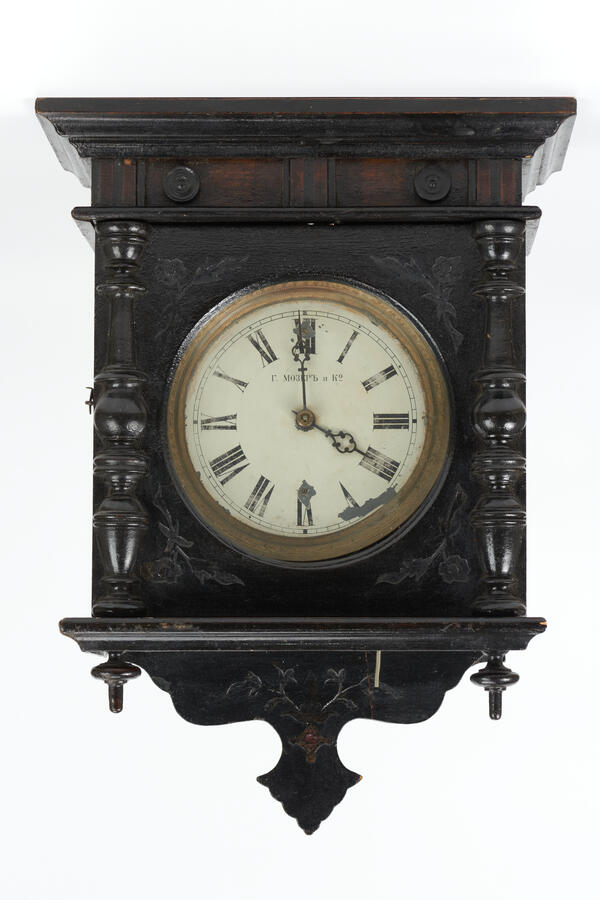The old wall weight-driven clock was made at the very beginning of the 20th century at the ‘H. Moser & Cie’ factory, which belonged to a Swiss manufacturer Johann Heinrich Moser. Their clocks were very popular in those years.
Johann Heinrich Moser was a hereditary clockmaker. He was born in Schaffhausen, Switzerland. He left his paternal home at a young age to continue his studies in Le-Locle — the capital of clockmaking at that time. There, he opened his own clocks and clock parts production factory and then decided to go to Russia.
Moser opened a clock workshop in St. Petersburg in 1826 and slightly changed his name to appear more English — Henry Moser. In 1828, the Swiss master was honored to present a gift — a gold clock of his production — to the Russian Emperor. All clock parts were manufactured by Moser in Le-Locle workshops, and the finished products were assembled in St. Petersburg. Some faces and cases were made in St. Petersburg as well, they had an inscription in Russian ‘Henry Moser & Co.’ on the products and packaging.
The main advantage of the clock is the accuracy of the mechanism, which was achieved thanks to the craftsmen’s manual work. The jeweler Karl Faberge used these clocks for his creations, and at the beginning of the 20th century “Henry Moser & Co.” became the supplier of the Empress Alexandra Feodorovna. For almost a hundred years the factory had been producing many types and models of watches and clocks: pocket and wrist watches, wall table clocks, as well as special watches and clocks for sailors, soldiers, and for visually impaired people.
The case for the wall clock was made of walnut wood or oak. The special feature of the clock was the company inscription on the face — the numbers in the Gothic style. The engraving and its place served as a sign for the clock’s value. For example, a clock with a single engraving ‘H. Moser & Cie’ on the back of the cover without mentioning the brand on the face was valued much higher than a clock with an engraving in Russian.
The clock displayed in this exhibition was donated to the museum in 1993 by a collector Sergey Chepkasov. The clock was regarded by his family as an heirloom.
Johann Heinrich Moser was a hereditary clockmaker. He was born in Schaffhausen, Switzerland. He left his paternal home at a young age to continue his studies in Le-Locle — the capital of clockmaking at that time. There, he opened his own clocks and clock parts production factory and then decided to go to Russia.
Moser opened a clock workshop in St. Petersburg in 1826 and slightly changed his name to appear more English — Henry Moser. In 1828, the Swiss master was honored to present a gift — a gold clock of his production — to the Russian Emperor. All clock parts were manufactured by Moser in Le-Locle workshops, and the finished products were assembled in St. Petersburg. Some faces and cases were made in St. Petersburg as well, they had an inscription in Russian ‘Henry Moser & Co.’ on the products and packaging.
The main advantage of the clock is the accuracy of the mechanism, which was achieved thanks to the craftsmen’s manual work. The jeweler Karl Faberge used these clocks for his creations, and at the beginning of the 20th century “Henry Moser & Co.” became the supplier of the Empress Alexandra Feodorovna. For almost a hundred years the factory had been producing many types and models of watches and clocks: pocket and wrist watches, wall table clocks, as well as special watches and clocks for sailors, soldiers, and for visually impaired people.
The case for the wall clock was made of walnut wood or oak. The special feature of the clock was the company inscription on the face — the numbers in the Gothic style. The engraving and its place served as a sign for the clock’s value. For example, a clock with a single engraving ‘H. Moser & Cie’ on the back of the cover without mentioning the brand on the face was valued much higher than a clock with an engraving in Russian.
The clock displayed in this exhibition was donated to the museum in 1993 by a collector Sergey Chepkasov. The clock was regarded by his family as an heirloom.


